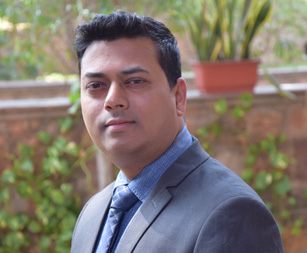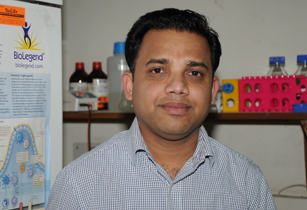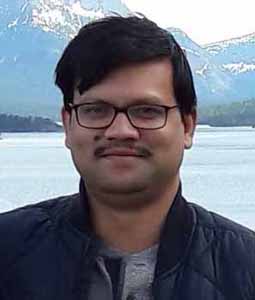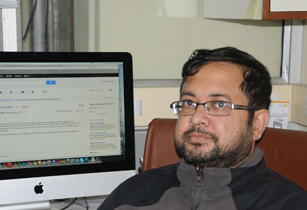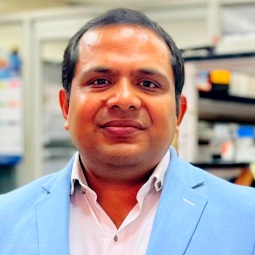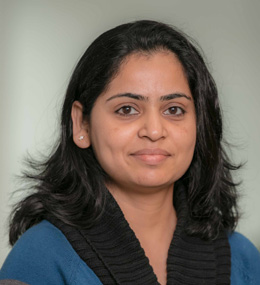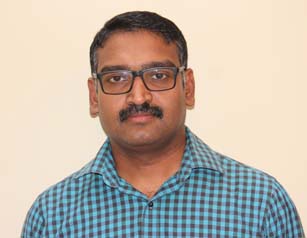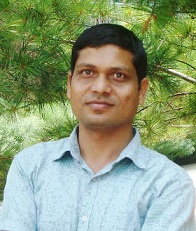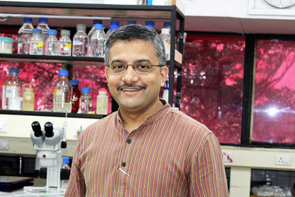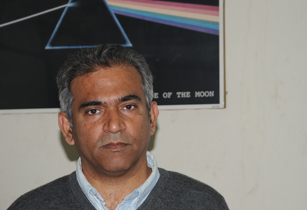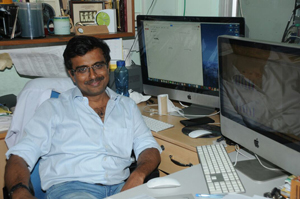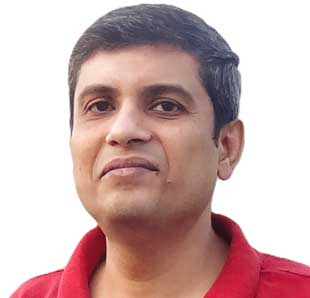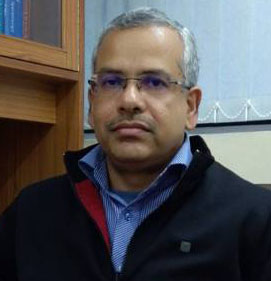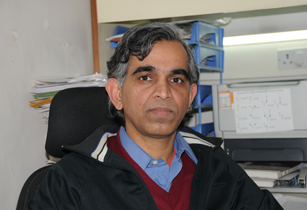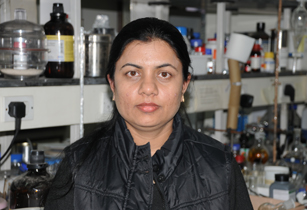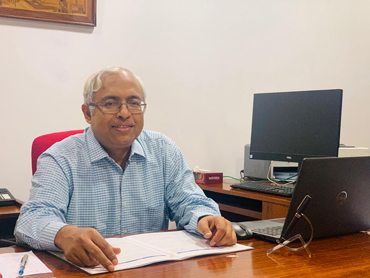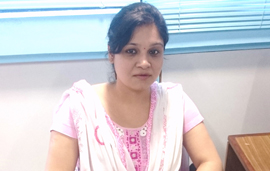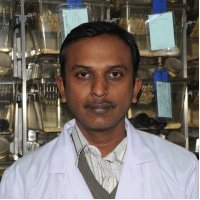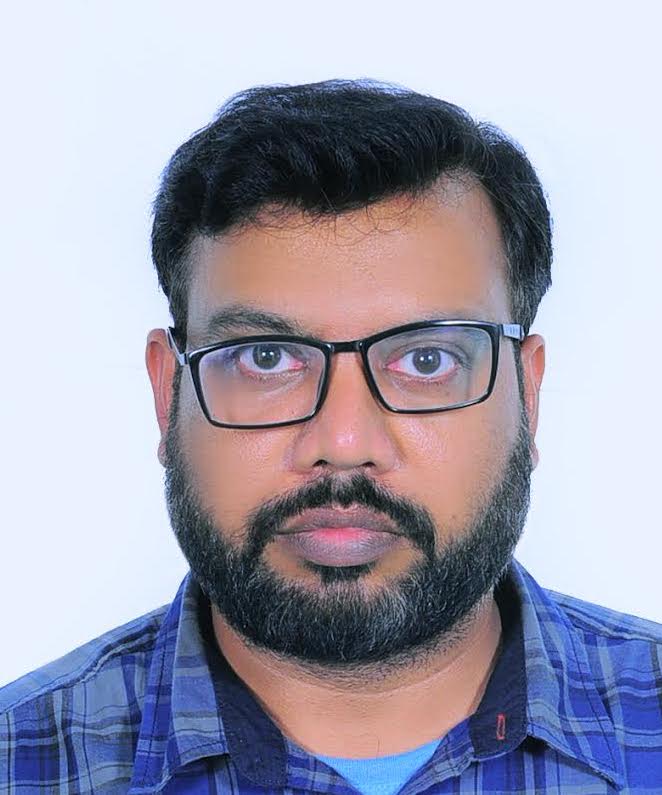Dr. G. Senthil Kumar
Protein-protein interactions, NMR Spectroscopy, X-ray Crystallography, Antigen-antibody interactions, Epitope/paratope mapping, Structure-function relationship studies, Structural dynamics
The major focus of the laboratory is to characterize the molecular basis for the interactions between pathogens (that include bacteria and viruses) and antibodies (that are the critical components of the immune system that helps to neutralize the effect of pathogens). Antibodies recognize a unique molecule of the pathogens, called antigen (Ag), with high affinity and specificity. Hence, the characterization of the region in the pathogens (called epitopes) that interacts with the antibodies is crucial for vaccine design.Furthermore, the importance of protein dynamics, besides the structure, in the function of intermolecular interactions is well-recognized.To this end, our laboratory is interested in the characterization of the role of structural and dynamic changesinduced as a result of antigen-antibody interactions using a combination of biochemical, biophysical, and immunological techniques.
Key Questions:
1. Can solution NMR spectroscopy be used routinely as a fast and reliable method for the characterization of unidentified epitopes that are inaccessible by other methods?
2. What is the molecular basis for the interaction of antigens with high-affinity antibodies through their flexible regions?
3. Does the antigen switch between different conformations, one of which is selected by the antibodies (conformational selection) or the antigens adopt different conformations upon binding to antibodies to enhance their binding (induced fit)?
4. Do the highly flexible regions of antigens become rigid upon complex formation with antibodies?
5. What are the differences in the thermodynamics and kinetics of the antigen-antibody interaction?
6. What is the mode of interaction between antigens and host proteins?
Mr. Sunder Singh Bisht, Mr. Rahul Yadav, Dr. Prakhar Agrawal, Dr. Adarsh Kumar Chiranjivi, Dr. Anamika Sharma, Dr. Hemant Arya
Funding:
Department of Science and Technology (SERB), Indian Council of Medical Research (ICMR), Department of Biotechnology (DBT), Department of Health Research (DHR, ICMR), National Institute of Immunology (NII).
- Kumar GS*, Page R and Peti W. (2021)1H,15N and 13C sequence specific backbone assignment of the MAP kinase binding domain of the Dual Specificity Phosphatase 1 and its interaction with the MAPK p38, Biomol NMR Assign. In Press. (*Corresponding Author)
- Kumar GS*, Page R andPeti W.* (2021)The interaction of p38 with its upstream kinase MKK6, Protein Sci. 30(4), 908-913. (*Co-corresponding Authors)
- Kirsch K, Zeke A, Toke O, Sok P, Sethi A, Sebo A, Kumar GS, Egri P, Poti AL, Gooley P, Peti W, Bento I, Alexa A andRemenyi A. (2020) Co-regulation of the transcription controlling ATF2 phosphoswitch by JNK and p38, Nat. Commun., 11(1), 5769.
- Kumar GS, Page R and Peti W. (2020) The mode of action of the Protein tyrosine phosphatase 1B inhibitor Ertiprotafib, PLOS One. 15(10), e0240044.
- Sok P, Gogl G, Kumar GS, Kirsch K, Sebo A, Drahos L, Gaspari Z, Peti W and Remenyi A. (2020) MAP Kinase-mediated activation of RSK1 and MK2 substrate kinases, Structure, 28(10), 1101-1113.
- Torgeson KR, Clarkson MW, Kumar GS, Page R andPeti W. (2020) Cooperative dynamics across distinct structural elements regulate PTP1B activity, J. Biol.Chem. 295(40), 13829-13837.
- Bertran MT, Mouilleron S, Zhou Y, Bajaj R, Uliana F, Kumar GS, van Drogen A, Lee R, Banerjee JJ, Hauri S, O’REilly N, Gstaiger M, Page R,Peti W and Tapon N.(2019) ASPP protein discriminate between PP1 catalytic subunits through their SH3 domain and the PP1 C-tail, Nat. Commun.,10(1), 771.
- Kumar GS, Page R and Peti W. (2019) Preparation of phosphorylated proteins for NMR spectroscopy, Methods Enzymol., 614, 187-205.
- Kumar GS, Choy MS, Koveal D, Lorinsky MK, Lyons SP, Kettenbach AN, Page R and Peti W. (2018) Identification of the substrate recruitment mechanism of the muscle glycogen protein phosphatase-1 holoenzyme, Science Advances, 4, eaau6044.
- Kumar GS, Clarkson MW, Kunze MBA, Granata D, Wand AJ, Lindorff- Larsen K, Page R and Peti W. (2018) Dynamic activation and regulation of the mitogen-activated protein kinase p38, Proc. Natl. Acad. Sci. USA., 115 (18), 46550-4600.
- Kumar GS, Gokhan E, Munter S, Bollen M, Vagnarelli P, Peti W and Page R. (2016) The Ki-67 and RepoMan mitotic phosphatases assemble via an identical, yet novel mechanism, eLife, 5: e16539.
Complete List of Published Work in My Bibliography:



